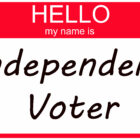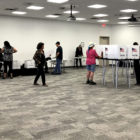2021 Legislative Session
Independent voters surpass 20 percent, but lack representation. Lawmakers unswayed.
|
When New Mexicans head to the polls during a general election, they usually have just two viable options: a Democrat or a Republican. There may be a Libertarian or unaffiliated candidate on the ballot, as well. Sometimes there may even be just one candidate on the ballot, as was the case in more than a quarter of the 112 state legislative races in the 2020 general election, all of whom represented a major political party.
Meanwhile, in the last 30 years, the number of independent voters has more than quadrupled, registering at just under 5% in 1990 and almost 22% in 2021. In three of the state’s counties–– Santa Fe, Taos, and McKinley–– independent voters actually outnumber Republican voters. “I think the tipping point is that we’re seeing especially newly registered voters– and even some voters who are longtime active voters– have become jaded by the two party system,” said Heather Ferguson, executive director of Common Cause NM.

